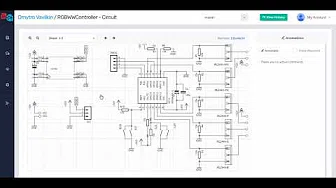Files
Last update 5 months 2 weeks
by Fabian
Current Sense.mdPCB Design Notes
- Current sense: INA226 datasheet https://www.ti.com/lit/ds/symlink/ina226.pdf#page=30
Schematics Design Notes
- Current sense filtering https://www.ti.com/lit/ds/symlink/ina226.pdf#page=14
TODO paper about
Current-sensing techniques for DC-DC converters, H.P. Forghani-zadeh et al. https://sci-hub.se/10.1109/MWSCAS.2002.1186927
https://rincon-mora.gatech.edu/publicat/cnfs/mw02_isns.pdf
- series sense resistor
- Rds sensing
- filter-sense inductor
| DC CMRR | CMRR @50 kHz | Gain err | TempDrift | Voff | BW | gains | notes | ||
|---|---|---|---|---|---|---|---|---|---|
| INA281 | +110 V | 120-dB | 65-dB | 0.5% | 20ppm | 1.3MHz | 20..500 | cheapest TI , $1.18 | |
| INA310A | 110V | 160dB | 0.15% | 10ppm | 20uV | 1.3MHz | 20..500 | int. Comparator $1.53 | |
| INA310B | 110V | 160dB | 0.5% | 20ppm | 150uV | 1.3MHz | 20..500 | int. Comparator | |
| INA169 | 60V | $1.22 | |||||||
| INA791x | internal 50A EZ-Shunt |
Reject Noise
- 50hz inverter
- 380Hz Power supply
- 39 kHz pwm
A loss-less technique to measure average output current: Use an RC-Filter to measure average switch node voltage. With this V_sw_avg, Vo and the coil ESR we can compute the current. Note that copper has temp coeff a = 0.0043/°C (https://cirris.com/temperature-coefficient-of-copper/), so a temperature change of 30°C results about 13% error. For an MPPT this is fairly enough, not for precise energy metering though.
https://sci-hub.se/10.1109/MWSCAS.2002.1186927
INA226 INA229








